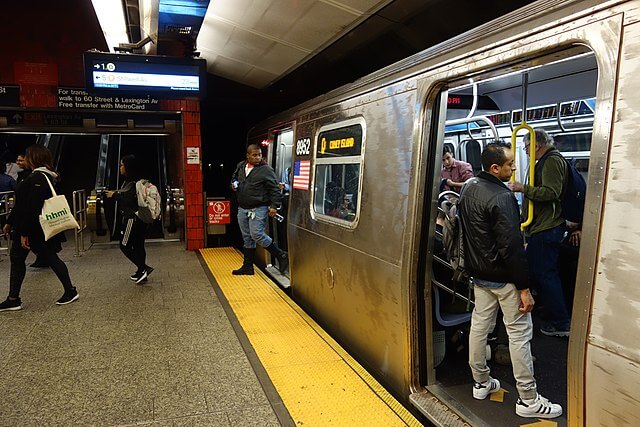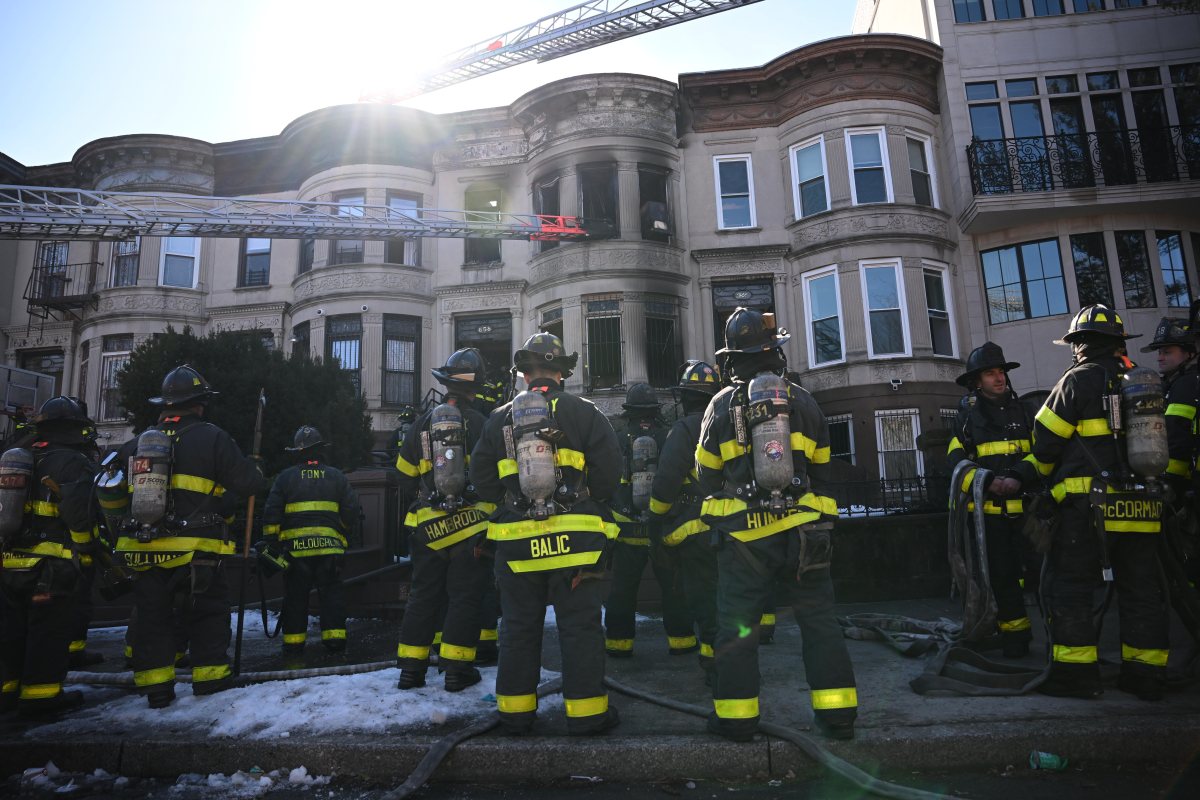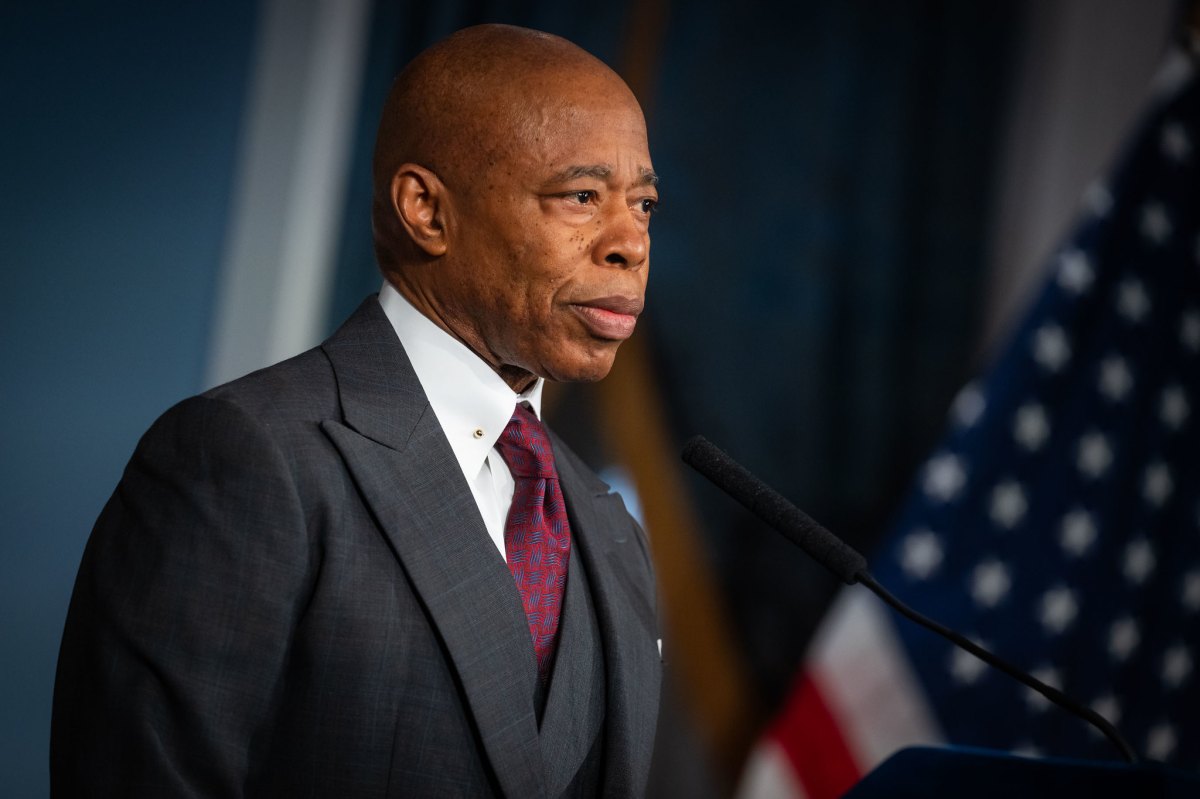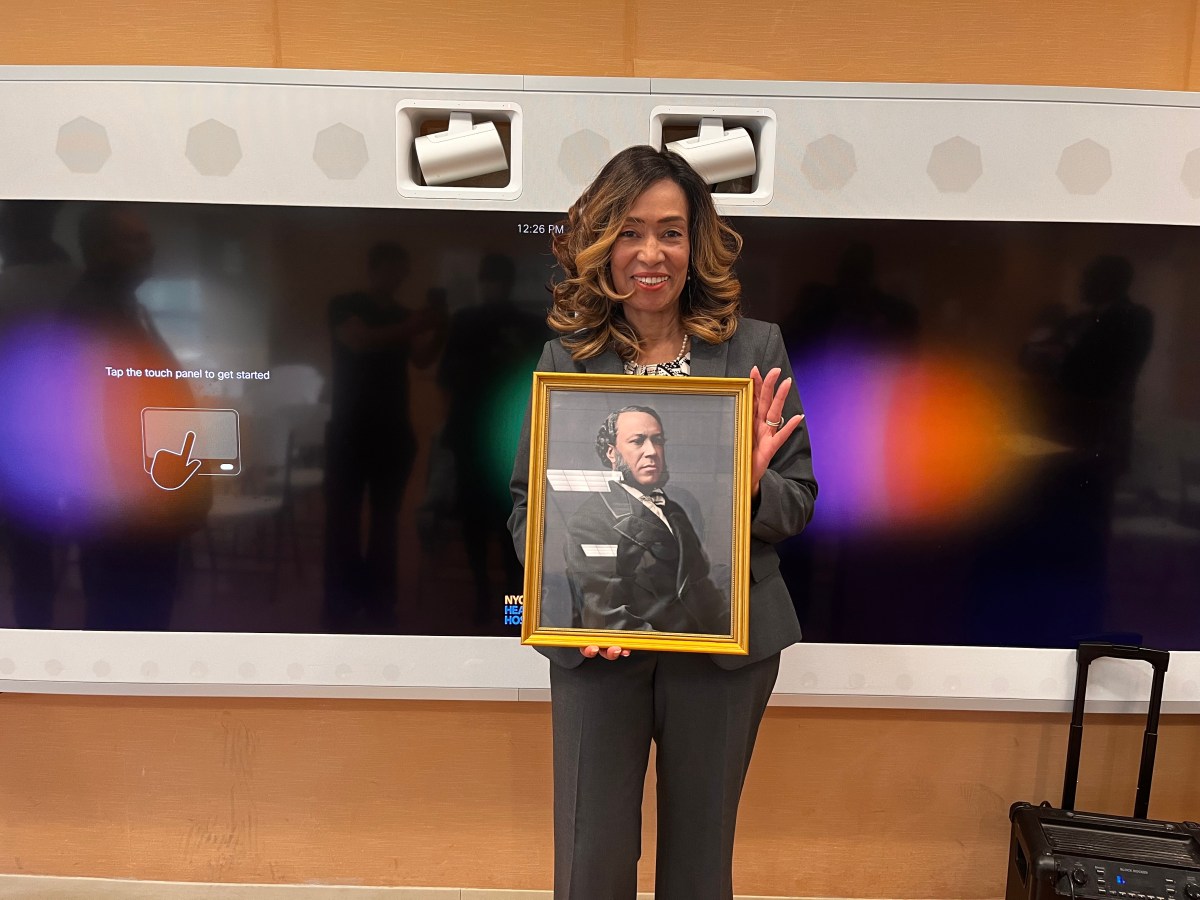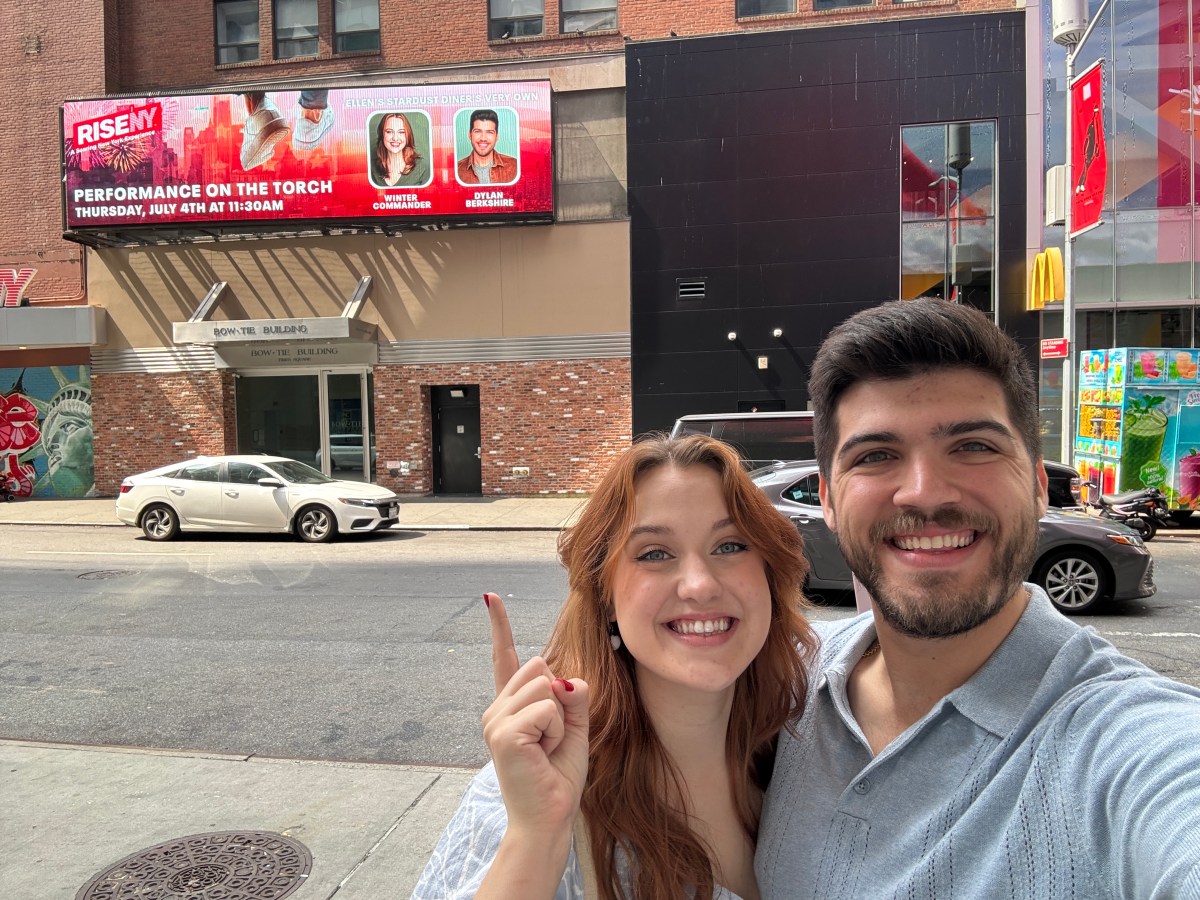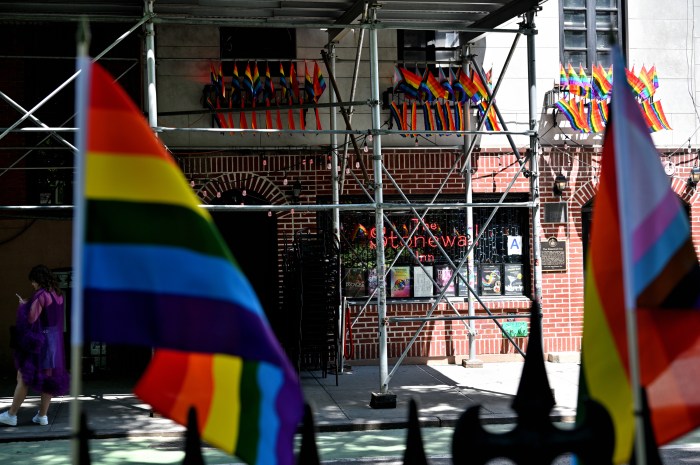Numerous protesters leapt down to the subway tracks on the Upper East Side on Saturday to protest the homicide of Jordan Neely, demonstrating against the lack of prosecution against his killer Daniel Penny but causing major delays for commuters and risking electrocution on the rails.
The protesters started jumping down to the electrified F/Q tracks at Lexington Avenue-63rd Street station at about 6 p.m. May 6, after marching through Manhattan to protest Neely’s death and the response to it, clashing with both cops and straphangers and leaving an incoming downtown Q train carrying 450 passengers stuck in the tunnel for more than half an hour.
Dozens of demonstrators remained on the tracks for more than 45 minutes, according to an MTA spokesperson, with at least one demonstrator seen on video jumping on the wooden protective cover of the third rail — which powers subway trains with enough electric current to kill a human — against the protestation of cops pleading for him to get off of it.
The MTA said power was shut off in the area at 6:21 p.m.; the tracks were cleared and power was restored to the station at 6:48, allowing the Q train to enter the station, with full service resuming six minutes later.
“Jumping on tracks is dangerous, reckless and can be life threatening,” said MTA New York City Transit president Rich Davey in a statement. “While peaceful protest has always been part of American fabric, endangering transit workers and other responders, while also delaying New Yorkers just trying to get where they need to go, by deliberately risking contact with an electrified third rail, is unacceptable.”
In December, a man was electrocuted to death after stepping on the third rail at the 51st Street 6 train station while walking along the tracks. Another man died in August after ending up on the tracks at the Houston Street 1 train stop, making contact with the third rail, and then getting stuck by a train. Just two weeks before that, another man died after falling to the tracks at Port Authority Bus Terminal and becoming engulfed in flames after touching the third rail.
On the other side of the tracks, protesters held open the doors exchanged tense words with riders on a Queens-bound F train stalled at the station, according to video of the incident.
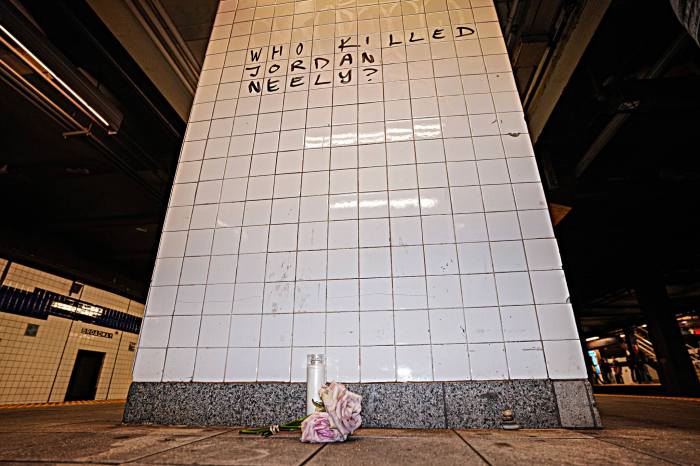
After being cleared from the tracks, a number of protesters clashed with officers at the station. An NYPD spokesperson said that 13 people, both inside and outside the station, were arrested. They were hit with charges including assault, trespassing, obstructing governmental administration, resisting arrest, and unlawful interference with a railroad train; one person was released with a summons.
The protesters were demonstrating their anger over the lack of accountability following Neely’s chokehold death on a Manhattan F train last week. Neely — a 30-year-old Black, mentally ill, homeless man who impersonated Michael Jackson on the subway — was reportedly screaming at passengers when he was subdued in a chokehold by a fellow passenger, 24-year-old Daniel Penny, who is white. With assistance from at least two other straphangers, Penny held Neely in a chokehold for several minutes before releasing him. He was later pronounced dead at Lenox Hill Hospital.
Penny, a former Marine from Long Island, was questioned by police but quickly released, and has not been charged. His lawyers say he was acting in self-defense after Neely began “aggressively threatening” Penny and other riders. They say Penny “never intended to harm Mr. Neely.”
The city’s Medical Examiner has ruled Neely’s death a homicide by neck compression, and the Manhattan District Attorney’s office is weighing whether to bring charges against Penny.
Neely’s death has sparked heated debate across the five boroughs over the city’s treatment of the homeless and mentally ill, vigilante justice, and racial profiling. Much criticism has been leveled at officials like Mayor Eric Adams, who has declined to condemn Penny’s actions, as well as the police who let him walk and the prosecutors who have not charged him.
Neely was arrested dozens of times and frequently interfaced with social service organizations, but homeless groups say the city failed him. His own mother was also a homicide victim; she was killed by her boyfriend, stuffed in a suitcase, and dumped in the Bronx. Neely’s relatives say he was never the same after that.
In his much-criticized statement last week, Mayor Adams touted “record investments in providing care to those who need it.” But the mayor has also instituted budget cuts at nearly all city agencies and has also pursued policies criticized as demonizing the homeless and mentally ill. He has stepped up sweeps of homeless encampments, instituted a policy of removing the homeless from the subways, and is pushing for changes in state law to allow involuntary commitment of mentally ill people deemed a danger to themselves or others.
“This is an incredible tragedy and my deepest sympathies are with the Neely family,” Hizzoner said in a statement on Sunday. “A man is dead and his family and our city are dealing with the emotional impact of the event. While many are saddened and upset, these emotions must be expressed peacefully while we await the outcome of DA Bragg’s investigation.”



